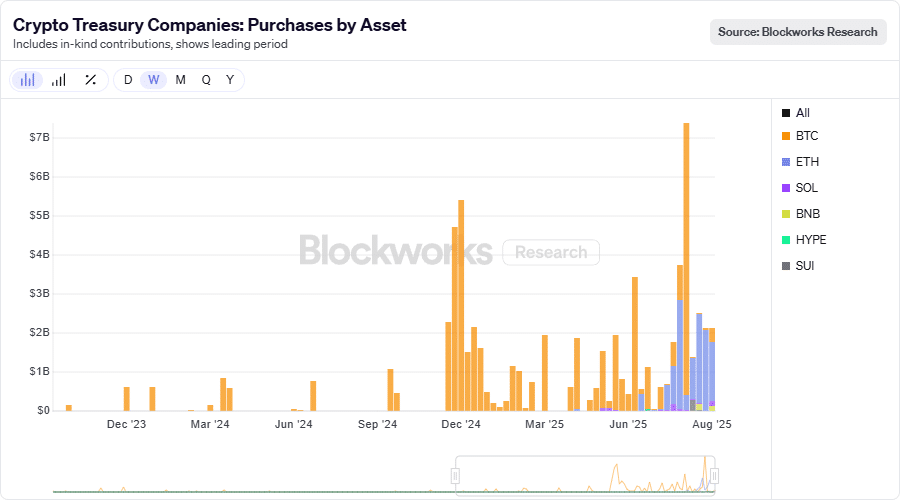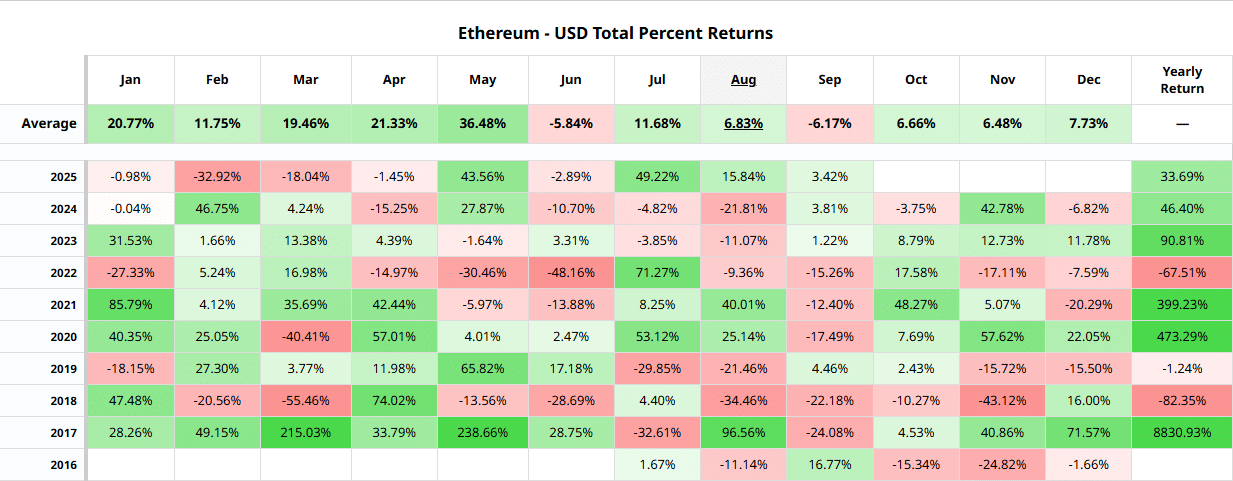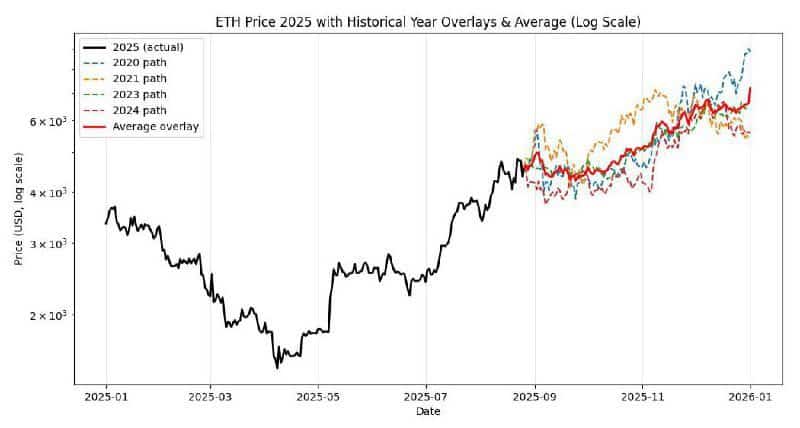Ethereum price outlook: Ethereum faces near-term pressure despite strong institutional ETH purchases and a $160B stablecoin base; seasonality and BTC weakness mean a definitive ETH recovery may not materialize until Q4, barring renewed liquidity or macro tailwinds.
-
Short-term risk of ETH pullback to $6k–$8k
-
Institutional treasury purchases and stablecoin supply support medium-term upside for Ethereum.
-
September seasonality historically weak; Q4 historically offers the strongest recovery window.
Meta description: Ethereum price outlook: ETH recovery faces September headwinds despite $160B stablecoins and rising treasury purchases — read tactical takeaways and risks.
What is the current Ethereum price outlook?
Ethereum price outlook is cautiously constructive: institutional ETH purchases and a rising stablecoin base support a medium-term recovery, but short-term seasonality and Bitcoin pressure keep a pullback likely until liquidity conditions improve and Q4 catalysts emerge.
How could treasury ETH purchases and stablecoins affect recovery?
Data shows treasury company ETH demand surged in August, with ETH forming the bulk of recent corporate crypto purchases. Stablecoin supply on Ethereum topping $160 billion provides a large on-chain liquidity reservoir. These factors increase buy-side capacity, but conversion into sustained price momentum depends on market-wide risk appetite and dollar liquidity.
Why might ETH not spark an instant recovery despite catalysts?
Market commentators, including Fundstrat CIO Tom Lee, highlight Ethereum as a major macro trade this cycle, citing stablecoins, AI, and institutional adoption as key catalysts. However, macro factors matter: rising U.S. Treasury issuance can drain dollar liquidity and depress risk assets, delaying immediate price gains even when demand metrics look healthy.
On-chain and treasury data indicate ETH purchases accelerated since June, and in August ETH dominated corporate buys. Still, conversion from balance-sheet accumulation to market-wide price recovery requires sustained risk-on flows and lower liquidity drains.

Source: Blockworks (mentioned as plain text)
When has September historically affected Ethereum performance?
Since 2017, Ethereum has tended to post negative or muted returns in September, making the month a recurring risk window for holders. In contrast, Q4 historically produces stronger returns, suggesting any meaningful recovery is more likely later in the year.

Source: Barchart (mentioned as plain text)
Overlay analyses shared on public social channels indicate paths where ETH could reach higher year-end levels, but these scenarios typically depend on a Q4 momentum shift rather than an immediate September rebound. Patience and monitoring macro liquidity metrics are prudent for portfolio allocation decisions.

Source: Elja on X (mentioned as plain text)
Frequently Asked Questions
Could a BTC pullback to $100k trigger an ETH buying opportunity?
If Bitcoin retreats to near-term support, ETH could offer tactical buying opportunities for qualified investors, but correlated downside risk means entries should be sized with stop-loss discipline and liquidity considerations in mind.
How should investors weigh institutional demand vs seasonality?
Institutional demand provides structural support, but historical seasonality can override short-term inflows. Combine on-chain signals, treasury purchase trends, and macro liquidity measures before acting.
Key Takeaways
- Short-term risk: September seasonality and BTC pressure increase odds of a near-term ETH pullback.
- Medium-term support: Institutional treasury purchases and a $160B stablecoin base create substantive buy-side capacity.
- Actionable insight: Monitor Treasury issuance, Fed rate-cut expectations, and stablecoin flows; Q4 historically offers the best window for recovery.
Conclusion
Ethereum price outlook balances meaningful on-chain and institutional tailwinds against well-documented seasonal headwinds. ETH recovery is plausible but likely delayed until macro liquidity improves and Q4 seasonal strength arrives. Track stablecoin supply, treasury purchases, and macro issuance to time risk-managed exposure.
